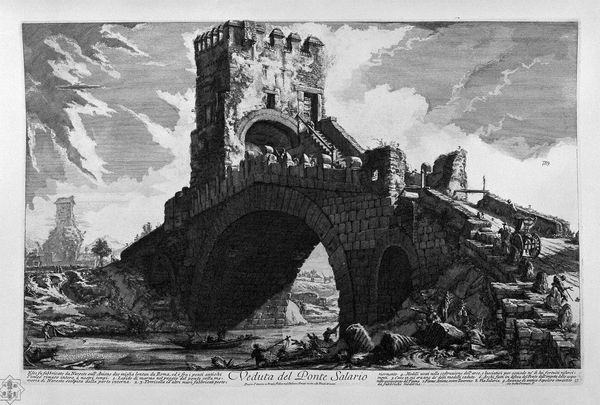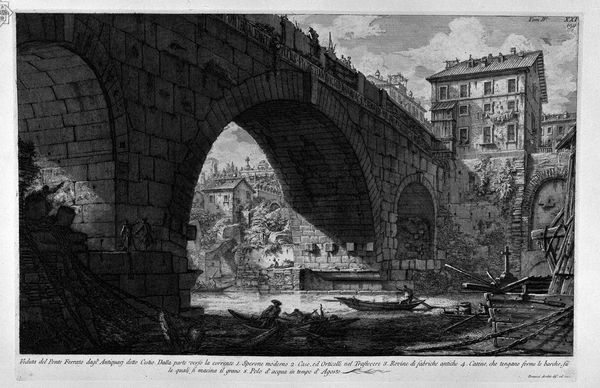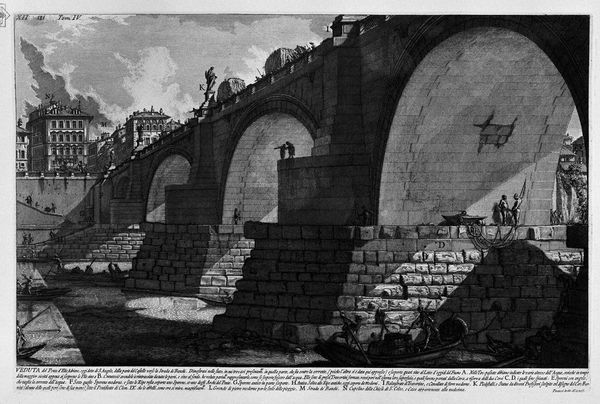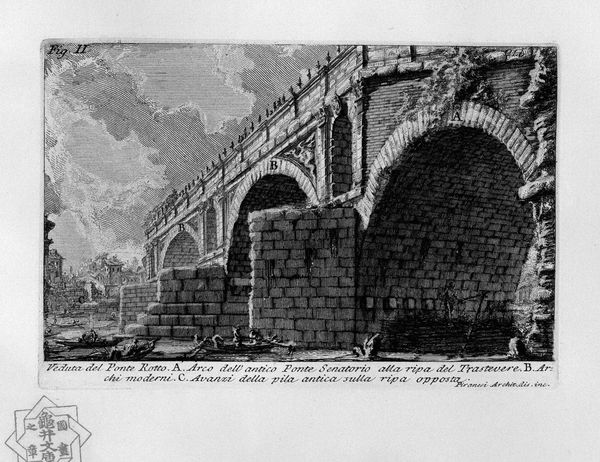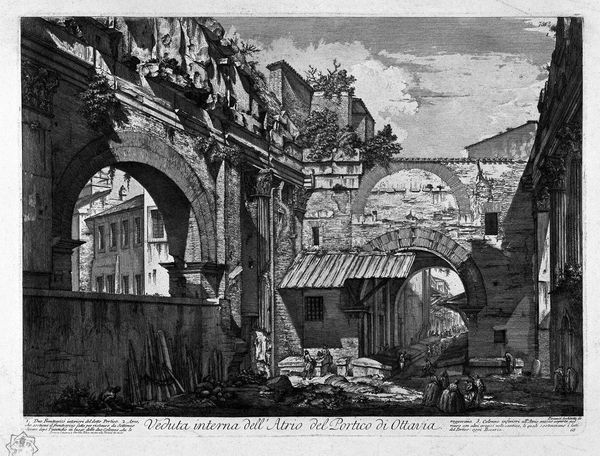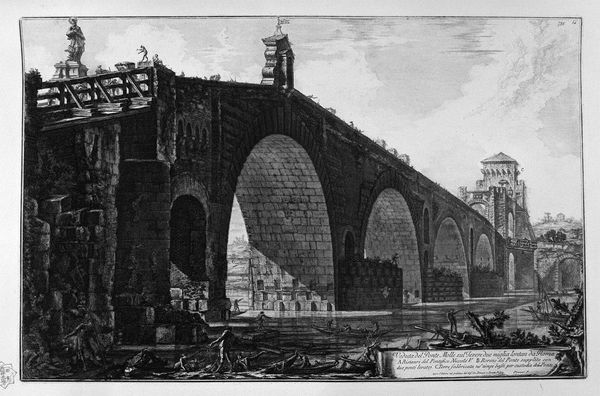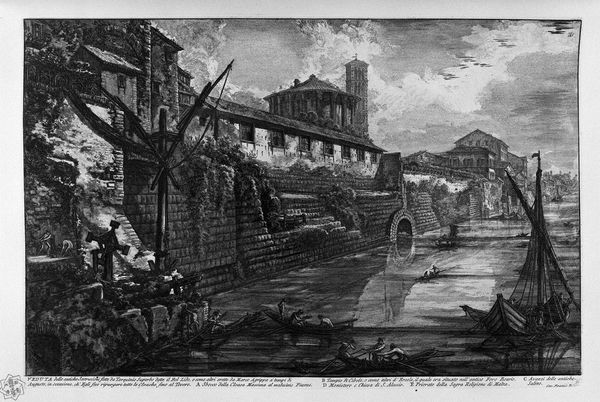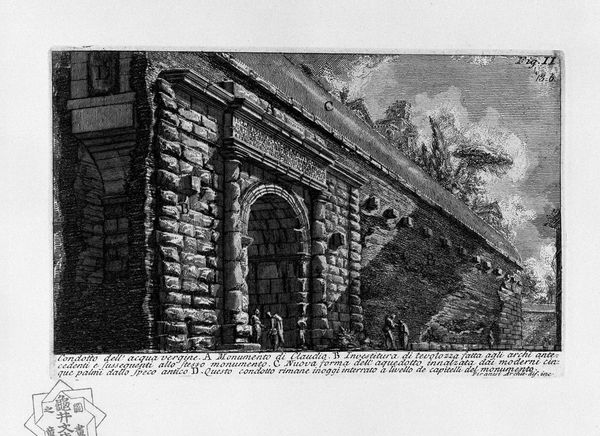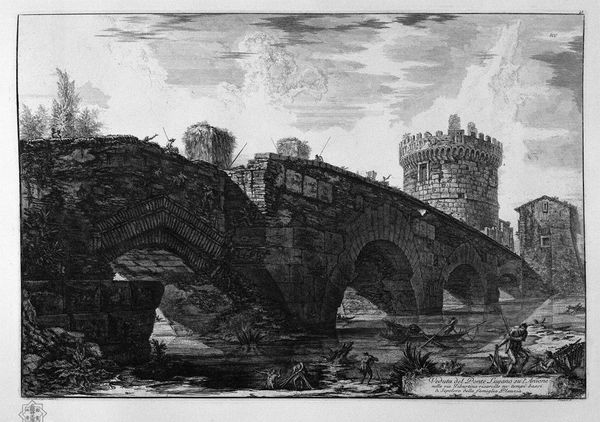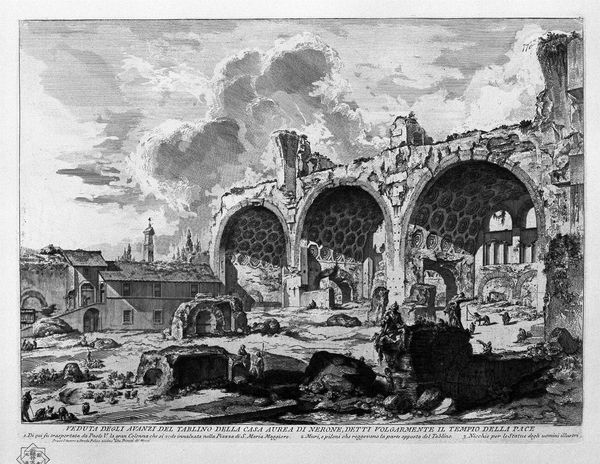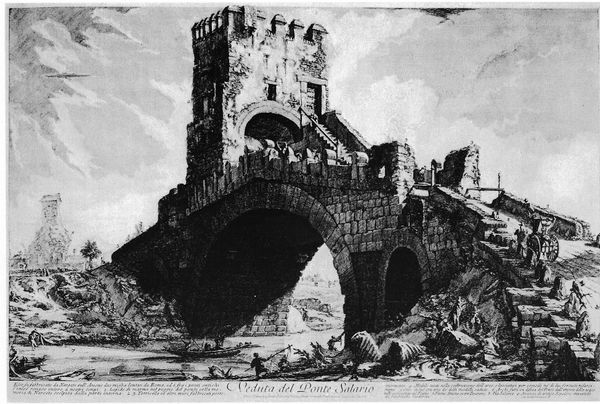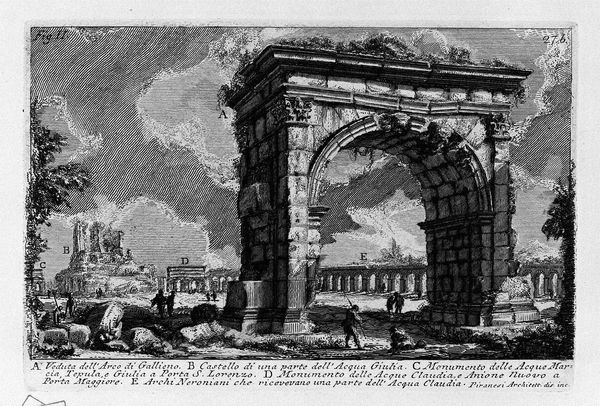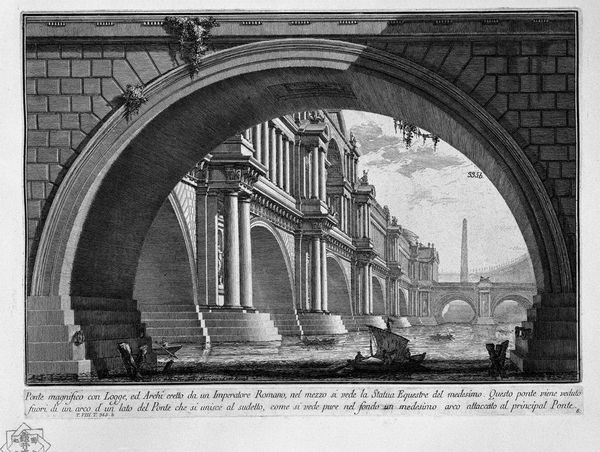
The Roman antiquities, t. 4, Plate XVI. A view of the portion of the ship built and planted before the Travertine substructures of the Temple of Aesculapius Tiber Island.
0:00
0:00
drawing, print, etching, engraving, architecture
#
drawing
# print
#
etching
#
landscape
#
romanesque
#
ancient-mediterranean
#
cityscape
#
engraving
#
architecture
#
monochrome
Copyright: Public domain
This is Giovanni Battista Piranesi’s etching, "A view of the portion of the ship built and planted before the Travertine substructures of the Temple of Aesculapius Tiber Island" from "The Roman Antiquities." Dominating the composition, the colossal arches of the bridge loom, their dark, cavernous spaces contrasting with the bustling river below. The density of Piranesi's cross-hatching creates a palpable sense of mass. Piranesi’s use of exaggerated perspective distorts architectural forms. He destabilizes the viewer's sense of scale and proportion. This technique engages with Enlightenment-era debates on the nature of perception and representation. The stark contrast between the monumental architecture and the minute human figures creates tension. The bridge becomes a symbol of the past. The human figures are dwarfed by its scale. These figures suggest the transience of human endeavor against the backdrop of enduring history. Consider the contrast between the detailed rendering of the stonework and the more loosely sketched elements of the surrounding city, a formal tension that invites ongoing interpretation.
Comments
No comments
Be the first to comment and join the conversation on the ultimate creative platform.
